Using Mathematics to Tackle the Pandemic
During the COVID-19 pandemic, mathematical modelling has been an essential tool for researchers and policy advisors to simulate and predict spread and illness by the virus and the impact of various public health strategies and interventions. Our researchers in the Department of Mathematics & Statistics have been leaders in this arena.
New funding to lead national disease modelling efforts
Our researchers received new funding to lead national disease modelling efforts to better predict, prevent, and respond to emerging infectious disease, including COVID-19. The first two projects are among five multidisciplinary infectious disease modelling networks being funded through the Emerging Infectious Diseases Modelling (EIDM) Initiative, by the Public Health Agency of Canada and the Natural Sciences and Engineering Research Council of Canada.

The One Health Modelling Network for Emerging Infections (OMNI), led by Professor Huaiping Zhu, received $2.5 million. The network plays a unique role in the EIDM consortium as the lead in systematically incorporating a One Health approach in its endeavours, by using multidisciplinary knowledge about the connections between environmental, animal, and human health to refine the disease modelling used to identify pathogens early. One Health is incorporated into our thinking, modelling research and training capacity while also recognizing the unique impact emerging infectious diseases has on Indigenous peoples and their communities.
“The OMNI network will focus on developing models and capacity to inform prevention, surveillance and response. We will ‘follow the bug’ from its place of origin to its introduction and establishment,” said Zhu.
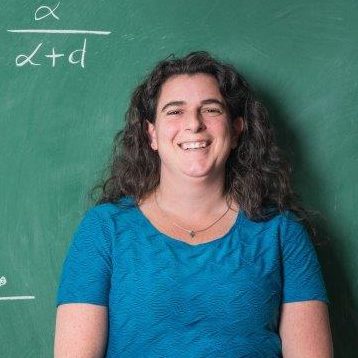

The project includes Faculty of Science Professors Jane Heffernan, Hanna Jankowski, Jude Kong, Iain Moyles, Carly Rozins and Hongmei Zhu.
The project Mathematics for Public Health (MfPH), co-led by Professor Jianhong Wu (with Professor V. Kumar Murty at the Fields Institute), received $3 million in funding. MfPH is a collaboration between the Fields Institute, the Atlantic Association for Research in Mathematical Sciences, the Centre de Recherches Mathématiques, and the Pacific Institute for Mathematical Sciences. It forms a national network of infectious disease modellers and public health policy-makers that can rapidly respond to public health emergencies.
“MfPH will accelerate our ability to respond to the current pandemic swiftly and accurately, and prepare for future public health emergencies,” said Wu.

The project includes Faculty of Science Professors Shengyuan (Michael) Chen, Ed Furman, Jane Heffernan, Jude Kong and Seyed Moghadas.
Additionally, a group of postdoctoral fellows at York (Leila Amiri, Jummy David, Martin Grunnill and Ao Li) are coordinating an MfPH Next Generation network for early career scholars, modellers and epidemiologists.
As well, Heffernan received a $200,000 grant from the National Research Council of Canada (NRC) to understand the rate of immunity after vaccination with different vaccine types. The project is part of the NRC’s Pandemic Response Challenge program.
“Different vaccines elicit an immune response using different immune system pathways, which affect the level and type of immunity you build,” said Heffernan. “With this research, we’re tracking the activation of the immune response that’s been excited by vaccines, looking at the generation of antibodies, as well as memory B cells and T cells.”
To do this, the researchers are combining mathematical models of immunity development with machine learning algorithms. The data will be provided to public health agencies and academic researchers to inform vaccine design and policy, and predict safety and efficacy.
Data and predictions to inform policy-makers
Our mathematical modellers continued to produce COVID-19 forecasts for public health units and policy-makers locally and internationally in 2021.
The Laboratory of Mathematical Parallel Systems (LAMPS, led by Zhu) received funding from the City of Toronto to support predictive modelling for Toronto Public Health. LAMPS and the Canadian Centre for Disease Modelling (also led by Zhu) produced weekly forecasts and long-term predictions on COVID-19 that were used to support decision making by Toronto Public Health and other units. The Laboratory for Industrial and Applied Mathematics at York, directed by Wu, also produced daily COVID-19 case forecasts for Ontario and all its public health units; the forecasts informed the Ontario COVID-19 Modelling Consensus Table, of which Wu is a member.
Heffernan advised modelling activities by Health Canada and the COVID Immunity Task Force, including modelling health care demand (e.g., ward and ICU beds) and immunity distribution estimations (seroprevalence). She was also asked to participate in many government-informing discussion panels and present her modelling work to groups and government agencies in Canada, USA and Europe. Her work informed decision-makers in public health mitigation programs, vaccine rollout, waning immunity, seroprevalence, and third dose booster programs.
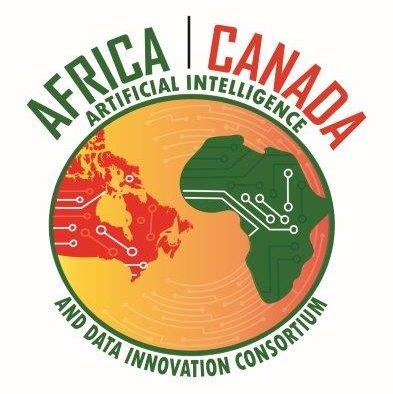
The Africa-Canada Artificial Intelligence and Data Innovation Consortium (ACADIC, acadic.org/), led by Kong and including Wu, continued to provide data insights to inform public health decision making in Africa, including vaccine roll-out strategies. ACADIC developed online COVID-19 monitoring dashboards that visualize locally relevant information in nine countries: Botswana, Eswatini, Cameroon, Mozambique, Namibia, Nigeria, Rwanda, South Africa and Zimbabwe. The dashboards are available for anyone to view and are official tools used by policy-makers; more than one million people view the South African dashboard daily, and more than 50 thousand people view the others daily.
Kong and his team also created a novel AI-powered early detection system for South Africa, to alert policymakers to the progression of new infection waves. Additionally, in a research paper Kong assessed social, economic, and environmental factors related to the spread of COVID-19, finding that youth, big cities, social media and income inequality play big roles. The findings are being used to inform policy-makers in Africa about which communities are most vulnerable.
Using modelling to reveal new insights on the pandemic
Our researchers developed and published new mathematical models that provided estimates and predictions about COVID-19 vaccination, immunity, public health measures and more. In fact, York ranked among the top institutions in Canada for publications on COVID-19 mathematical modeling, with Wu ranking in the top spot.
Wu and his team, including Heffernan, published research papers that demonstrated the importance of intensifying testing and contact tracing to prevent future outbreaks and waves, and determined optimal pathways for reopening with different scales and speeds of mass vaccine rollout. His team also evaluated the impact of vaccination in different age groups to achieve herd immunity, and demonstrated the importance of strain-specific interventions to prevent or mitigate outbreaks.

Moghadas and his colleagues published articles for The Commonwealth Fund that estimated the impact of vaccination on reducing deaths and hospitalization in the US; the research was covered by CNN. He and his team also used mathematical modelling to estimate population immunity in the US, and to find that increasing the interval between two doses of an mRNA COVID-19 vaccine to nine to 15 weeks resulted in superior protection; the latter findings were covered by Forbes.
Moyles led a study that found that shorter but more frequent lockdowns could lead to fewer infections. The team, which included Heffernan and Kong, developed a novel model that considered individual decisions around the personal cost of complying to social measures. They found that social fatigue and the cost of isolation (e.g., financial, psychological) can diminish the effectiveness of lockdowns and lead to worse health outcomes. The research received media attention by CTV News and Bloomberg, among other outlets.
Celebrating New and Renewed Research Chairs
York Research Chairs (YRC)

Professor Ozzy Mermut (Physics & Astronomy) received a new YRC in Vision Biophotonics. Mermut is a biophysicist harnessing the power of light to study human aging. Her group develops diagnostics and therapeutic biophotonics technologies to address age-related degenerative diseases. These techniques translate to accelerated aging studies in the environment of space, to understand long-term health consequences in space. This YRC is for the program Vision: Science to Applications (VISTA), of which Mermut is a core member.
Additionally, the following YRCs were renewed:
- Nantel Bergeron (Mathematics & Statistics) – Applied Algebra
- Chun Peng (Biology) – Women’s Reproductive Health
- Amro Zayed (Biology) – Genomics
This brings the total number of YRCs in the Faculty of Science to 11.
Canada Research Chairs (CRC)

Professor Sean Tulin (Physics & Astronomy) had his Tier 2 CRC in Particle Physics and Cosmology renewed. His research provides new directions toward discovering dark matter’s elusive particle nature. The existence of dark matter is one of the Universe’s great mysteries. All stars, planets, and interstellar gas are made from atoms, and yet atomic matter represents only 15 per cent of the total matter in the Universe. The remaining 85 per cent is dark matter. Dark matter provides the cosmic foundation for galaxies to form, but its microphysical properties remain unknown. By combining astrophysics, particle theory, and cosmology, Tulin is developing new ideas to illuminate dark matter’s particle dynamics through its effect on cosmic structure.
This brings the total number of CRCs in the Faculty of Science to 10.
Expanding the Toolbox for Organic Chemists
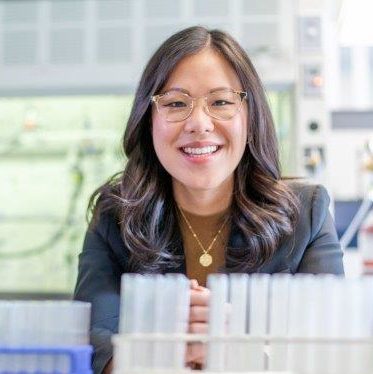
Medicinal compounds containing a fluorine atom have shown to be remarkably effective and potent, making them desirable targets for drug discovery and development. In fact, some of the most widely prescribed medicines contain fluorine, such as the anti-cholesterol drug Lipitor.
“Adding fluorine to a drug molecule can drastically improve its medicinal properties,” said Professor Christine Le (Chemistry). “For instance, because of fluorine’s small size and electronegativity, it can block sites of oxidation, which can make a drug more stable.”
Developing new fluorinated compounds is challenging because it often depends on using expensive and highly reactive chemicals that are often incompatible with sensitive drug molecules. Le is looking to shake things up in this area of chemistry, by developing more efficient, cost-effective and sustainable reactions that create these new molecules. In 2021, she received new funding from the Natural Sciences and Engineering Research Council of Canada, the Canada Foundation for Innovation and Ontario Research Fund, as well as the American Chemical Society Petroleum Research Fund – a highly competitive award that very few Canadians receive – to pursue this line of research.
Her team is using simple and inexpensive fluorine-containing chemicals and figuring out how to transform them into useful medicinal compounds with newly designed catalysts (i.e., substances that increase the rate of a reaction).
“We’re hoping to develop new reactions that expand the ‘toolbox’ that organic chemists can use to stitch chemical bonds and create new molecules in the lab.”
Additionally, the new reactions she develops will aim to be more sustainable, by using more renewable resources and limiting the production of hazardous substances, and more efficient (i.e., requiring fewer steps) – all of which will save time, money and resources down the road if scaled up.
“It takes about 10 years for newly discovered drugs to reach the market; we hope that by making drug discovery and synthesis more efficient, it will lead to more effective, safer and cheaper medicines.”
Automating Intuition
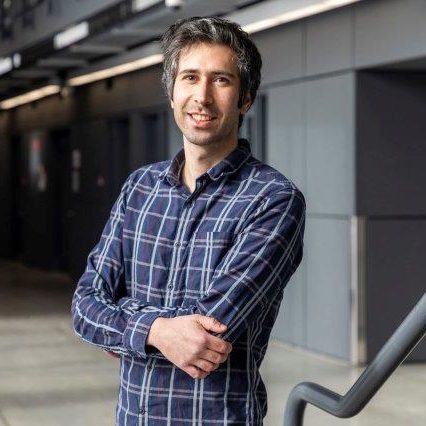
As a core member of VISTA (Vision: Science to Applications) at York and professor in the Department of Physics & Astronomy, Joel Zylberberg’s research lies at the interface of neuroscience and artificial intelligence (AI).
One of his research projects, funded by a Government of Canada New Frontiers in Research Fund, is exploring a new paradigm for machine learning that could “automate intuition” in a sense. The applications of this work are huge: one day AI systems could perform the same function as a radiologist, for example, or any expert that makes complex decisions.
Deep Learning (DL) is where algorithms based on the structure and functioning of the human brain learn from large amounts of data to create patterns for decision making. For example, if you show these algorithms many pictures of handwritten alphabetical letters, they learn to recognize them. But this type of learning has shortcomings.
“Current DL training is different from how students are taught: good teachers share their reasoning, which helps students generalize beyond examples seen in class,” said Zylberberg. “In contrast, DL models often memorize their training data and thus fail to generalize.”
To overcome this failure, Zylberberg is investigating what will happen when he “shows” DL models how humans perform a task, by providing the algorithms with brain activation recordings. His team will have people sit in an fMRI scanner while they do visual tasks (e.g., distinguish between different bird species) and then use these people’s brain activation patterns to teach algorithms to duplicate the task expertise. Furthermore, the team will use experts (e.g., active bird watchers) and non-experts to do tasks, going on the hypothesis that using expert brains as a teacher leads to better DL performance.
“Our eventual goal is to apply this to radiology and other domains that require specialized human visual expertise,” he said. “By ‘uploading’ that expertise from the brain into AI algorithms, we could dramatically increase people’s access to experts like clinicians.”
Such algorithms could be widely shared with the whole world at a low cost. This work could also be applied to other AI systems.
“At the highest level, our technique will be valuable in automating any task that requires intuition.”
Hunting for Mysterious Magnetic Monopoles

Using data collected by the world's largest and most powerful particle accelerator – the Large Hadron Collider (LHC) at the European Organization for Nuclear Research (CERN) in Geneva, Switzerland – Professor Wendy Taylor (Physics & Astronomy) is on the hunt for magnetic monopoles. She is leading the search as part of the A Toroidal LHC ApparatuS (ATLAS) experiment, an international collaboration of 3,000 physicists from more than 170 universities and laboratories in 38 countries.
“All magnetic objects that have ever been observed have a north pole and a south pole,” said Taylor. “For instance, if you try to break a magnet into its north and south pole, you instead get two magnets, each with a north and a south pole. Some theories predict that particles with only one pole, what we call magnetic monopoles, should exist. But no one has been able to see them yet.”
The elusiveness of magnetic monopoles has puzzled physicists for more than a century. Taylor explains that it makes sense for particles with a fundamental magnetic charge to be present in the universe. And if they do exist, it would explain one of the biggest mysteries in particle physics: why there appears to be a fundamental unit of electric charge (i.e., the electron charge).
Taylor and the ATLAS team designed a specialized technique to search for evidence of magnetic monopoles and have been analyzing data collected from proton-proton collisions at the LHC. They are looking for evidence of large energy deposits that would be left behind by the magnetic monopoles.
Their analysis of data collected in 2015-2016 didn’t uncover any signs of magnetic monopoles, but now they are looking at a much larger dataset, collected in 2017-2018. Additionally, Taylor and her PhD student Wen-Yi Song recently studied the possibility of searching for magnetic monopoles in the collisions of lead ions at the LHC. Their results show that the development of new analysis techniques is required.
Wrestling to Understand SUMO
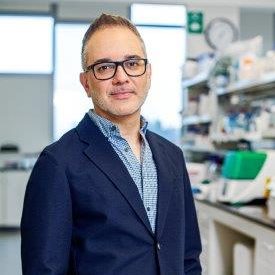
Professor Emanuel Rosonina (Biology) leads one of a handful of labs worldwide "wrestling" to understand the role of SUMO in controlling gene expression.
SUMO, short for “small ubiquitin-like modifier,” is a protein that modifies (or sumoylates) many other proteins that have various functions in the cell. SUMO’s main targets, however, are proteins that control gene expression.
“Although sumoylation is widespread, targeting thousands of proteins, and increases dramatically when cells encounter environmental stress conditions, it’s not clear what exactly sumoylation does and why so many proteins are targeted,” said Rosonina. “We also don’t know why some cancers show high levels of sumoylated proteins.”
Using yeast as his model organism, Rosonina’s research has so far shown that sumoylation ensures that proteins interact only with the genes that they're supposed to control and that these genes can be activated and deactivated efficiently as needed. In 2021 he received a $830,000 grant from the Canadian Institute of Health Research to continue pursuing this line of work.
With the new funding, he and his team are taking a deeper dive into how SUMO controls the dynamics of protein-DNA interactions to ensure that gene expression is correct. They will identify specific proteins that are targets of sumoylation to characterize how SUMO modification controls their functions at the molecular level. Additionally, they will examine how changes to cellular sumoylation levels affect gene expression by determining which genes are regulated this way and through what mechanisms.
“In the long term, we hope that our work may lead to understanding how dysregulation of SUMO in cancer cells can lead to gene expression patterns that promote tumour growth and formation.”
Exposing the ‘Environmentally Friendly’
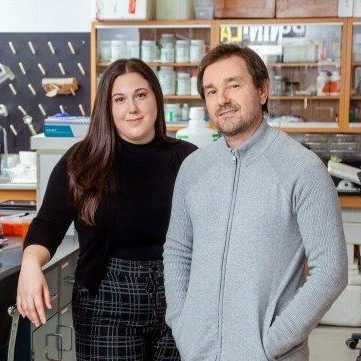
Many insects, crustaceans and molluscs live in freshwater and play important roles in maintaining the health of the ecosystem. They can be an important food source to other animals like fish and birds, and also help keep water clean by feeding on decaying organic matter and waste.
However, their health and survival are continuously challenged by changes in water chemistry. One of those challenges is salinization, caused by a number of things including road salt used in the winter that then runs off into water.
The impact of salinization on the physiology of freshwater insects and crustaceans is a major research focus in Professor Andrew Donini’s (Biology) lab, where he and his students try to understand how these animals deal with salt. They do this by studying the expression and regulation of salt transporters, water transporters and proteins that make up structures that regulate the passage of molecules between cells.
Recently, the team, comprised of PhD graduate Andrea Durant, PhD student Britney Picinic and Donini wanted to better understand the impact of organic-based deicers, such as beet juice, since these products are being used instead of road salt in some areas without a full understanding of their ecological effects.
“Juice from sugar beets is marketed as environmentally friendly because it reduces the amount of salt used in winter, therefore helping to limit freshwater salinization,” said Donini. “The problem is that there hasn’t been any research on how beet juice may affect organisms living in the freshwater habitats that receive runoff; it is just assumed that since we’re using less salt, it’s a good thing.”
In the lab, Donini and his team exposed the crustacean Hyalella aztecta (which is found in large numbers in the Great Lakes) to different concentrations of salt-contaminated water and a commercial beet juice brine mixture. They found that the beet juice product has detrimental effects on the crustacean, different than those caused by salt alone. The product’s high potassium level seems to cause the insects to lose control of regulating the ion in their blood, which is problematic considering how important potassium is to cell function.
Picinic confirmed, “Our findings reveal that these de-icing products are not as environmentally friendly as we think and they open the door for further research on their impact.”
Detecting Abrupt Changes in Data

Professor Yuehua (Amy) Wu (Mathematics & Statistics) is a researcher who considers interesting statistical problems with her students and models data to come up with analytical tools others can use.
“With statistics, you have to apply,” said Wu. “I train my students to have a good experience with data. We use real data and ask, what is it telling us? We come up with a model with theoretical results.”
One of Wu’s major research interests is change-point analysis. A changing point occurs when there is an abrupt change in the data, where the mechanism of what occurs before and after that point is different. Detecting and analyzing change points can be useful in many different application areas such as tracking stock markets, monitoring medical conditions, detecting climate change, monitoring and assessing the efficacy of the government policies, and more.
“Think of changing point in the context of having a security camera set up around your home,” explained Wu. “One can use changing point analysis to program their system to remove useless footage captures like the movement of squirrels or other animals, and keep more interesting footage of bigger things like people and cars.”
Throughout the COVID-19 pandemic, Wu has continued to work with collaborators virtually and is preparing numerous research papers for publication. Her recent research has focused on applying changing point analysis to medical imaging. She and her students have developed statistical methods to detect significant changes in images of gastrointestinal bleeds that can also be applied to detect injured lungs. Her methods try to detect meaningful differences in image pixels that indicate abnormalities, which could then be used to automatically alert doctors. The same tools could also be used in other applications such as for quality control, detecting smoke and pollution, and more.
“The idea is for these methods to be packaged as software that can be used by anyone,” added Wu. “People don’t have to fully understand the statistics behind them, they could just go into the software, input their data, and get results automatically.”
